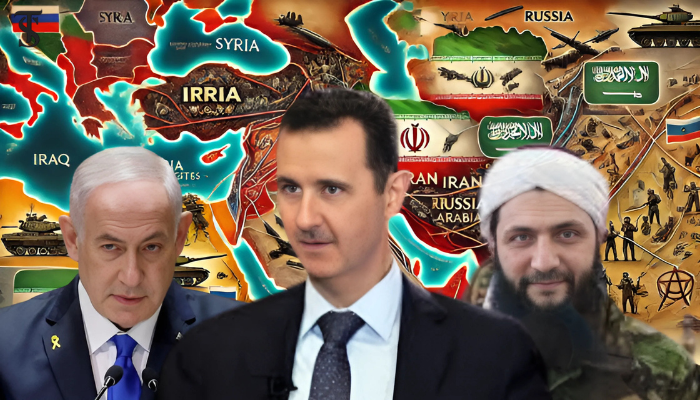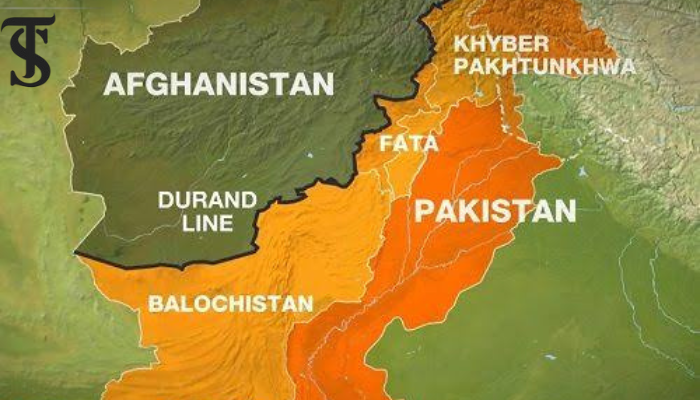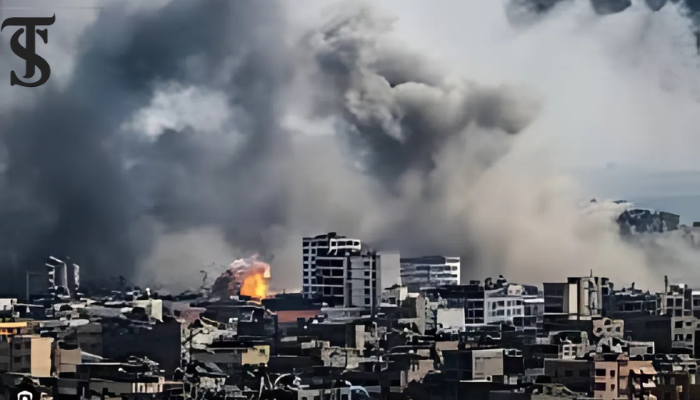The Post-Assad Era: Geopolitical Shifts and Regional Challenges

- Iran-Russia Nexus: A strategic alliance between Iran and Russia shapes military and political dynamics in the Middle East, focusing on shared interests in Syria and countering Western influence.
- US-Israel-Saudi Bloc: This coalition counters Iran and Russia, fostering regional tensions by supporting opposing factions and pursuing strategic dominance.
- Regional Impact: Rivalries intensify instability in key regions like Syria, Iraq, and Lebanon, influencing conflicts, alliances, and the broader geopolitical landscape.
The fall of Bashar al-Assad’s regime signals a significant catastrophe in Middle Eastern affairs. For many, the rapid collapse of the Assad government, which had played a vital role in Syrian and regional politics for almost 50 years, seemed absurd. Yet, in less than two weeks, rebel forces swept the country. This pivotal event reshapes Syria’s internal dynamics and sets the stage for a new phase of regional and geopolitical tensions. The key factors behind Assad’s fall, the rise of rebel coalitions, and the complex interplay of domestic and global actors merit examination to understand the challenges and possibilities in Syria’s post-Assad era.
Why Did Bashar al-Assad’s Regime Fall?
To maintain power, the regime traditionally relied on a combination of dictatorship, foreign aid, and elite support. However, by 2024, systemic weaknesses will become irreversible. Various factors, particularly economic decline, contributed to the regime’s downfall. Years of international sanctions, widespread corruption, loss of access to oil-rich regions, and the extensive destruction caused by the civil war devastated Syria’s economy. Essential infrastructure, industries, and public services were in disrepair. The financial strain was acutely felt within the military, where soldiers were underpaid and poorly equipped. Weakened by years of attrition and defections, the military crumbled in the face of the rebel advance, leading to widespread desertions and instability.
Assad’s reliance on disorganized militias and local power brokers contributed to the fall of key metropolitan centers such as Aleppo and Homs, damaging Iran’s critical land corridor to Hezbollah. While Assad’s survival during the civil war was largely due to allies like Russia, Iran, and Hezbollah, his over-reliance on external forces exposed vulnerabilities. By 2024, both Russia and Iran faced internal and external pressures, diminishing the strategic impact of their support.
The Geopolitical Fallout
The fall of the Assad government has profound implications for Russia’s regional interests, particularly in Syria. Russia’s 2015 military intervention, which played a key role in prolonging Assad’s rule, is now undermined, raising questions about its military commitment and regional ambitions. Meanwhile, Iran, which heavily invested in Assad’s survival as a cornerstone of its Axis of Resistance with Hezbollah, faces significant challenges. The Sunni Islamist ideology of Hayat Tahrir al-Sham (HTS), coupled with its rivalry against Iran’s Shia allies, threatens Tehran’s regional policy.
The regime’s collapse boosts Turkey’s influence over Syria’s future, given its prior support for Syrian opposition groups like HTS. However, Turkey’s opposition to Kurdish autonomy may clash with other factions, including the US-backed Syrian Democratic Forces. The weakening of the Iran-Hezbollah axis presents new opportunities for Sunni Islamist organizations, while the rise of such groups along Israel’s border in the Golan Heights introduces fresh concerns. Israel must carefully balance its strategic approach as Syria’s political situation evolves.
The United States, having reduced its direct involvement in Syria, is focused on counterterrorism and strategic partnerships with Israel. With Assad’s removal, Washington faces the dual challenge of countering HTS while maintaining stability in northeastern Syria.
Challenges of Transition
The removal of Assad does not guarantee peace or stability for Syria. The fractured opposition, longstanding grievances, and destroyed infrastructure make consensus on a national government difficult, given diverging ideologies and territorial interests. Years of conflict have left Syria with an enormous rebuilding task, requiring billions of dollars. While foreign aid is essential for development, political unrest may deter investment.
Many Arab countries are likely to play a proactive role in maintaining stability and preventing spillover effects, particularly as Iranian and Russian influence declines. Additionally, the resurgence of ISIS in eastern Syria poses a major security threat to the post-Assad state. Stabilizing Syria is critical to preventing a terrorism revival, as prolonged instability could allow ISIS to re-establish networks and reclaim territory.
In short, the removal of Bashar al-Assad from power will have a significant impact on Middle Eastern geopolitics, reshaping alliances and power dynamics. A post-Assad Syria could influence regional concerns, including the Palestinian question. Key regional powers such as Turkey, Iran, Saudi Arabia, and Israel will compete to shape the post-Assad reality, each guided by their own strategic goals.
Iran’s defeat in Damascus may weaken its influence in the Levant, particularly its support for Hezbollah and its position against Israel. Saudi Arabia and its allies may view a post-Assad Syria as an opportunity to challenge Iranian ambitions while asserting Arab leadership. Turkey’s role in ensuring stability in Syria is linked to its concerns over Kurdish groups and refugee flows.
The reconfiguration of Syria’s geopolitical role will also affect the Palestinian cause, as the country has historically supported Palestinian resistance. The nature of the government that emerges could either erode or bolster Palestinian solidarity. In this context, Israel’s strategic focus will be securing its northern borders and containing Hezbollah. The post-Assad era presents both challenges and opportunities for the Middle East, with the fate of the Palestinian cause and Syria’s role in the region determining whether it remains a bastion of resistance or succumbs to larger geopolitical realities.

Mehwish Nasir
The author is a Bahria University graduate in International Relations and passionate about fostering constructive societal discourse through research and writing.





